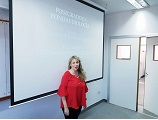Keynote Forum
Patrick Walsh
Dr. Patrick Walsh Ear, Nose and Throat clinic, Australia
Keynote: Full septocartilaginous reconstruction rhinoplasty
Time : 10.00-10.40

Biography:
Mr Walsh is an Australian-trained ENT surgeon. Having completed his Royal Australasian College of Surgeons fellowship in 2011, he then went on to complete post-fellowship training in the UK in rhinology. He operates at Linacre, Masada, Cabrini Malvern and Holmesglen Private. Publicly, he works at Western Health where he heads the multidisciplinary Head and Neck Cancer clinic.
Abstract:
Nasal trauma or aggressive over-resection of the cartilaginous nasal skeleton during cosmetic rhinoplasty lead to functional and aesthetic difficulties that differ according to the thickness of the soft-tissue envelope. Corrective surgery in these cases frequently requires the full reconstruction of the L-strut and lower-lateral complex using rib cartilage. The principles applying to the use of rib-grafts to reconstruct the cartilaginous skeleton of the nose in each case are discussed.




















